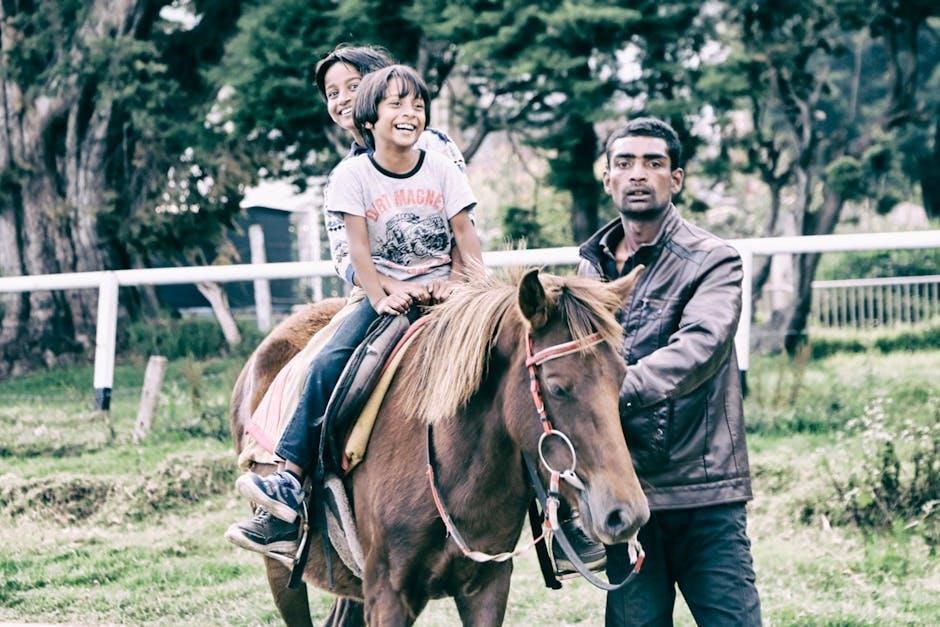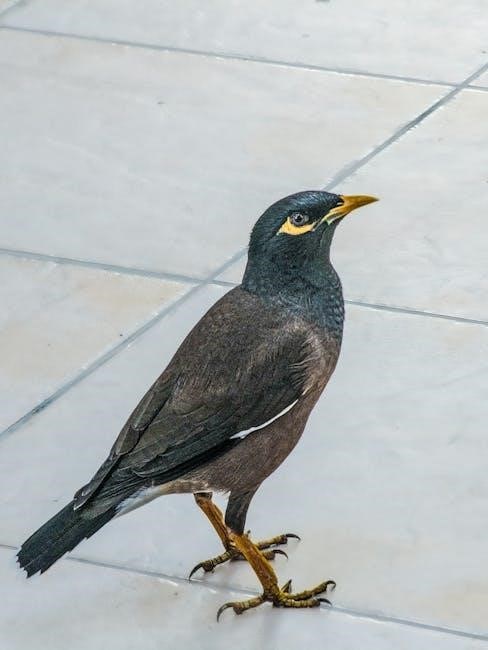
The Guide Pets: A Comprehensive Guide
Welcome! This guide offers a comprehensive overview of guide dogs, from eligibility and application to training and teamwork. Discover how these remarkable animals provide independence and enhanced mobility for individuals who are blind or visually impaired.
What is a Guide Dog?
A guide dog is more than just a pet; it’s a highly trained service animal specifically educated to assist individuals who are blind or have significant visual impairments. These dogs undergo rigorous training to navigate various environments, ensuring the safety and independence of their handlers. Their primary function is to act as the eyes of their partner, skillfully avoiding obstacles, changes in elevation such as curbs and stairs, and other potential hazards that may impede safe travel.
Beyond physical navigation, guide dogs provide emotional support and companionship, fostering confidence and reducing feelings of isolation. They are trained to lead their handlers in a straight line from one point to another, stop at all changes in elevation, and negotiate various obstacles found in both urban and rural settings. A guide dog’s training also encompasses appropriate behavior in public spaces and at home, ensuring they are well-behaved and unobtrusive members of society. They are integral to promoting independence and inclusion for their handlers.
Eligibility Requirements for Receiving a Guide Dog

To be considered eligible for receiving a guide dog, several criteria must be met to ensure the partnership is successful and beneficial for both the individual and the animal. Firstly, applicants must be legally blind, typically defined as having a visual acuity of 20/200 or less in the better eye with correction, or a significantly restricted field of vision. Applicants must demonstrate the need for a guide dog to help them remain safe and effective in their everyday travel.
Beyond visual impairment, candidates must also possess the physical and mental capacity to handle and care for a guide dog. This includes demonstrating sufficient mobility skills and the ability to participate actively in the training program. Furthermore, applicants need to provide a suitable home environment for a guide dog, ensuring they have adequate space, access to necessary care, and a safe and stable living situation. Financial stability to provide food and medical care is also considered. The minimum age is 16 years old.
Application Process for a Guide Dog
The application process for obtaining a guide dog is comprehensive, designed to assess an applicant’s suitability and ensure a successful partnership. The initial step involves submitting a detailed application form, which gathers information about the applicant’s personal background, living situation, travel skills, and experience. This form often delves into aspects such as family information, housing details, and the applicant’s ability to provide a suitable home environment for a guide dog.
Following the application submission, a thorough review process takes place, which may include interviews, assessments, and consultations with professionals. These evaluations aim to determine the applicant’s ability to handle a guide dog effectively, their understanding of the responsibilities involved, and their overall compatibility with the program. The application also requires information regarding the applicant’s health, education, employment, and references. Providing as much detail as possible in each section is crucial for a comprehensive evaluation.
Application Submission Details
When submitting your application, ensure all sections are completed with accurate and detailed information. The application will ask about your personal background, including family and housing details, to assess your ability to provide a suitable home environment for a guide dog. Be prepared to describe your travel skills, education, and employment history, as well as any previous experience with guide dogs.
Financial information will also be requested to determine your capacity to cover the necessary food and medical care for a guide dog. Include references who can vouch for your character and abilities. It’s essential that the application is signed and dated by you, and witnessed by another person. Providing comprehensive and honest information throughout the application will aid in the evaluation process. This provides the organization with a well-rounded understanding of your needs and capabilities, increasing the likelihood of a successful match.
Guide Dog Training: An Overview

Guide dog training is a comprehensive and structured process that transforms carefully selected dogs into skilled partners for individuals who are blind or visually impaired. This rigorous training typically begins when the dogs are around 14 months old, taking place at specialized guide dog training centers.
The training encompasses various stages of learning, using positive reinforcement methods to shape desirable behaviors. Dogs learn to lead a person in a straight line, stop at changes in elevation, and navigate obstacles safely. They are also trained to work confidently in diverse environments, including city streets and public transportation. The goal is to create a happy working guide dog with the motivation and confidence to assist their human partner effectively. This process involves skilled trainers who carefully nurture the dogs’ abilities and ensure they meet the high standards required for guide work.
Stages of Guide Dog Training
The journey of a guide dog from puppyhood to a reliable partner involves several key stages. It all begins with volunteer puppy raisers who provide foundational socialization and basic obedience, preparing the young dogs for formal training. This early stage is crucial for developing a well-adjusted temperament and positive interactions with people and various environments.
Formal guide dog training typically commences around 14 months of age. This intensive phase focuses on specific skills essential for guiding, such as leading in a straight line, stopping at curbs and stairs, and navigating obstacles. Positive reinforcement techniques are employed to encourage desired behaviors and build confidence. The duration of this phase can vary, but generally lasts several months. The final stage involves matching the trained dog with its future handler and providing tailored training to ensure a successful partnership.
Early Stages: Patterning Responses
In the initial phases of guide dog training, a primary focus is on establishing reliable, patterned responses to specific commands and environmental cues. This involves shaping desirable behaviors through consistent repetition and positive reinforcement. Trainers utilize methods to create a clear association between a command and the desired action, ensuring the dog understands what is expected.

For example, the dog learns to consistently stop at curbs, stairs, and changes in elevation. These actions are essential for safe navigation. Positive reinforcement, such as praise and food rewards, plays a vital role in solidifying these responses. The dogs are patterned to respond reliably, regardless of distractions. This stage lays the groundwork for more complex guide work, forming the foundation for a safe and effective partnership. The early stages emphasize consistency and clarity to build a strong foundation for the guide dog’s future role.
Training Methodology: Positive Reinforcement
Guide dog training heavily relies on positive reinforcement techniques. This approach emphasizes rewarding desired behaviors to encourage their repetition, fostering a positive and motivated learning environment. High-value rewards, such as food treats and verbal praise, are used to reinforce correct responses. The aim is to build confidence and enthusiasm in the dogs, making the training process enjoyable and effective.
Trainers create a happy working environment by associating commands with positive experiences. This method avoids punishment or harsh corrections. Positive reinforcement not only shapes behavior but also strengthens the bond between the trainer and the dog. The dogs are more likely to willingly perform tasks when motivated by rewards and affection. This methodology creates guide dogs that are not only skilled but also eager to work and please their handlers. This approach creates a strong and trusting relationship.
Matching a Guide Dog with a Person
The process of matching a guide dog with an individual is a crucial step in ensuring a successful partnership. It involves carefully considering various factors to find the best fit for both the dog and the person. Assessors evaluate the applicant’s lifestyle, personality, walking speed, and environment. They also consider the individual’s specific needs and preferences.
The dog’s temperament, energy level, and working style are also carefully assessed. Trainers consider the dog’s personality and how it aligns with the applicant’s needs. Matching ensures the dog can effectively meet the challenges of the individual’s daily life. A good match promotes a harmonious and productive partnership, enabling the person to travel safely and confidently. The goal is to create a team that works well together, enhancing the independence and quality of life for the person with visual impairment. This matching process is essential.
The Importance of Teamwork: Guide Dog and User
The success of a guide dog partnership relies heavily on teamwork between the dog and the user. The guide dog provides safe navigation, avoiding obstacles and changes in elevation. However, the user plays a critical role in directing the dog and making decisions about safety.
The user must provide clear and consistent verbal cues and directions to guide the dog effectively. It’s the user’s responsibility to decide when it is safe to cross streets and give directions. The dog relies on the user’s judgment and knowledge of the environment. The user’s white cane remains a valuable navigational tool, complementing the guide dog’s skills in certain situations. Trust, communication, and mutual understanding are essential for a successful partnership. Through effective teamwork, the guide dog and user can navigate the world safely and confidently, fostering independence and enhancing the user’s quality of life. This collaborative effort allows for seamless travel.
Guide Dog Training Duration and Timeline
The journey to becoming a qualified guide dog is a comprehensive process. Guide dogs typically complete their training when they are approximately 18-24 months old. The formal training period usually lasts around four months, focusing on obedience, navigation, and specific guiding skills. However, the overall timeline begins much earlier.
At about 8-12 weeks old, puppies leave their mothers and live with volunteer puppy raisers. These raisers provide early socialization and basic obedience training, preparing the dogs for their future roles. At around 14 months of age, dogs typically begin their formal training at specialized guide dog centers, accompanied by trainers. The timeline can vary slightly depending on the dog’s progress and the specific program. The duration ensures that the dogs are well-prepared to provide safe and effective guidance for their handlers. This investment of time and resources is essential for a successful partnership.

Guide Dog Behavior in Public and Home
Guide dogs are expected to exhibit impeccable behavior both in public and at home. In public settings, they must be well-behaved and focused on their handler, navigating obstacles, stopping at changes in elevation, and ignoring distractions. They are trained to guide their handler safely through various environments, including city streets, public transportation, and crowded areas. The dogs must remain calm and composed, ensuring the safety and confidence of their handler.
At home, guide dogs should be equally well-behaved, demonstrating calmness and obedience. While they are working animals, they are also companions and should adapt to the home environment seamlessly. This includes being house-trained, responding to commands, and respecting household rules. They should be relaxed and comfortable in their living space, ready to work when needed but also able to enjoy downtime with their handler.
Ongoing Training and Support
The journey with a guide dog doesn’t end after the initial training period. Ongoing training and support are crucial for maintaining a successful partnership between the guide dog and its handler. This includes refresher courses, follow-up visits, and access to resources that address any challenges that may arise. Guide dog organizations typically provide continuous assistance to ensure the well-being of both the dog and the handler.
Regular training sessions help reinforce learned behaviors and address any new situations or environments the team may encounter. Support services may include veterinary advice, behavioral consultations, and peer support groups, creating a network of assistance for guide dog users. The aim is to empower handlers with the knowledge and skills necessary to maintain a strong, effective partnership with their guide dog throughout their working life. This comprehensive approach ensures the continued safety, confidence, and independence of the handler.